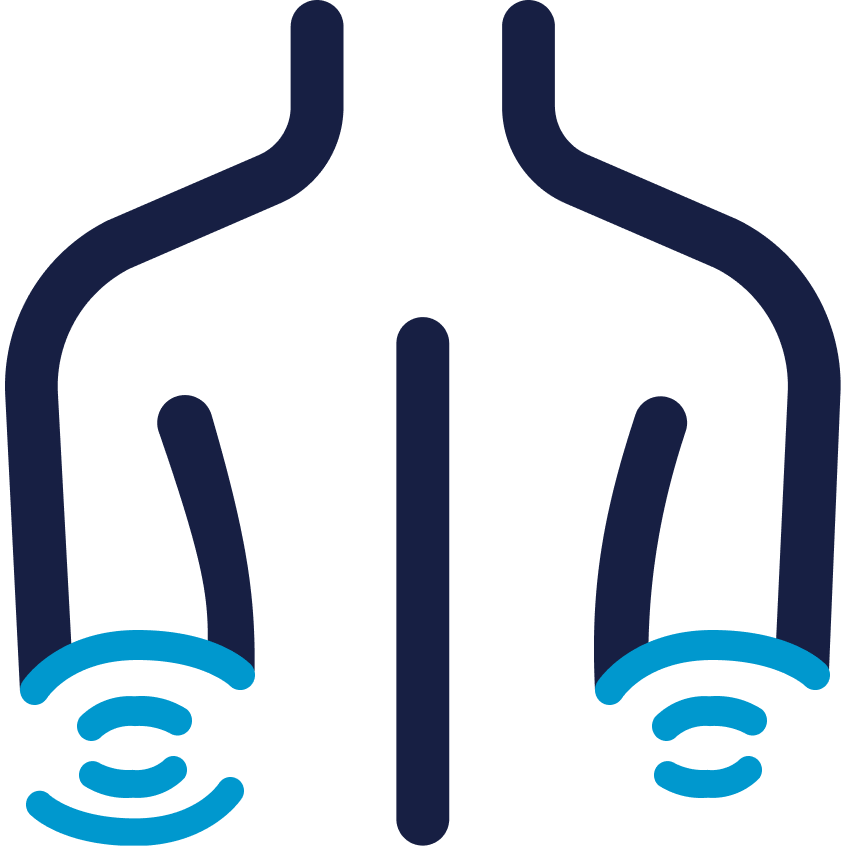
- Specialty Procedures
- /Elbow

During Elbow Arthroscopy, the orthopaedic surgeon inserts a small camera, called an arthroscope, into your elbow joint. The camera displays pictures on a monitor, which the surgeon uses to guide miniature surgical instruments. Because the arthroscope and other instruments are thin, this procedure requires tiny surgical incisions rather than the larger cut that open surgery requires. This less invasive option reduces pain and stiffness and often shortens recovery time.
Elbow Arthroscopy is typically recommended for patients with painful conditions that do not respond to nonsurgical treatment methods, including rest, physical therapy, medications or injections. Elbow arthroscopy may relieve these painful symptoms and may also be recommended for patients with loose pieces of bone and cartilage that need to be removed or to release scar tissue restricting motion.
Elbow Arthroscopy is also commonly used to treat fractures, tennis elbow (lateral epicondylitis), osteoarthritis (wear and tear arthritis), rheumatoid arthritis (inflammatory arthritis) and osteochondritis dissecans (activity-related damage to the capitellum portion of the humerus seen in throwers or gymnasts).
The procedure is typically performed under general anesthesia, and the patient is given intravenous antibiotics to lessen the risk of infection after surgery. The surgeon then positions the patient on either their side (lateral decubitus) or stomach (prone) so that the arthroscope may be easily adjusted to have a clear view inside the elbow. Great care is taken to ensure that the spine and other pressure points in the patient's arms and legs are well-protected and padded.
After the patient is positioned correctly, the surgeon will fill the elbow joint with fluid. The fluid helps your surgeon see the structures of the elbow more clearly through the camera and lessens the risk of injury to the blood vessels and nerves surrounding the elbow joint. The surgeon will then make several small incisions where the arthroscope and small instruments are inserted into the joint.
During the procedure, fluid continuously flows through the arthroscope to keep the view clear and control bleeding. The surgeon begins by evaluating the joint before beginning any specific treatments. Other small instruments are inserted through separate incisions to assist with shaving, cutting, grasping, suture passing and knot tying. In many cases, special devices are also used to anchor stitches into bone.
Once the procedure is complete, the incisions are usually stitched or covered with skin tapes, and an absorbent dressing is applied to the elbow. Depending upon the procedure, the surgeon will place an additional soft dressing that will allow movement or a plaster splint that will restrict movement and better protect the elbow.
Although recovering from Elbow Arthroscopy is often faster than traditional open surgery, it will still require weeks to months for complete recovery. Pain and discomfort should be expected for several weeks post-op. If the surgery is more extensive, it may take longer for the pain to subside. The surgeon will likely prescribe pain medicine to be taken regularly for the first few days after surgery, along with an anti-inflammatory.
Patients typically need to ice the elbow and keep it elevated for 48 hours after surgery to reduce the risk of severe swelling and help relieve pain. When elevating the arm, the elbow should rest higher than the heart, and the hand should be positioned higher than the elbow. The patient may also be encouraged to move their fingers and wrist frequently to help stimulate circulation and minimize swelling. Early range-of-motion exercises to prevent joint stiffness may also be part of your post-op instructions. However, the surgeon will provide specific post-op instructions that should be followed, as the above are general guidelines. Dressing care will also depend on the type of surgery performed and the physician's preferences.

